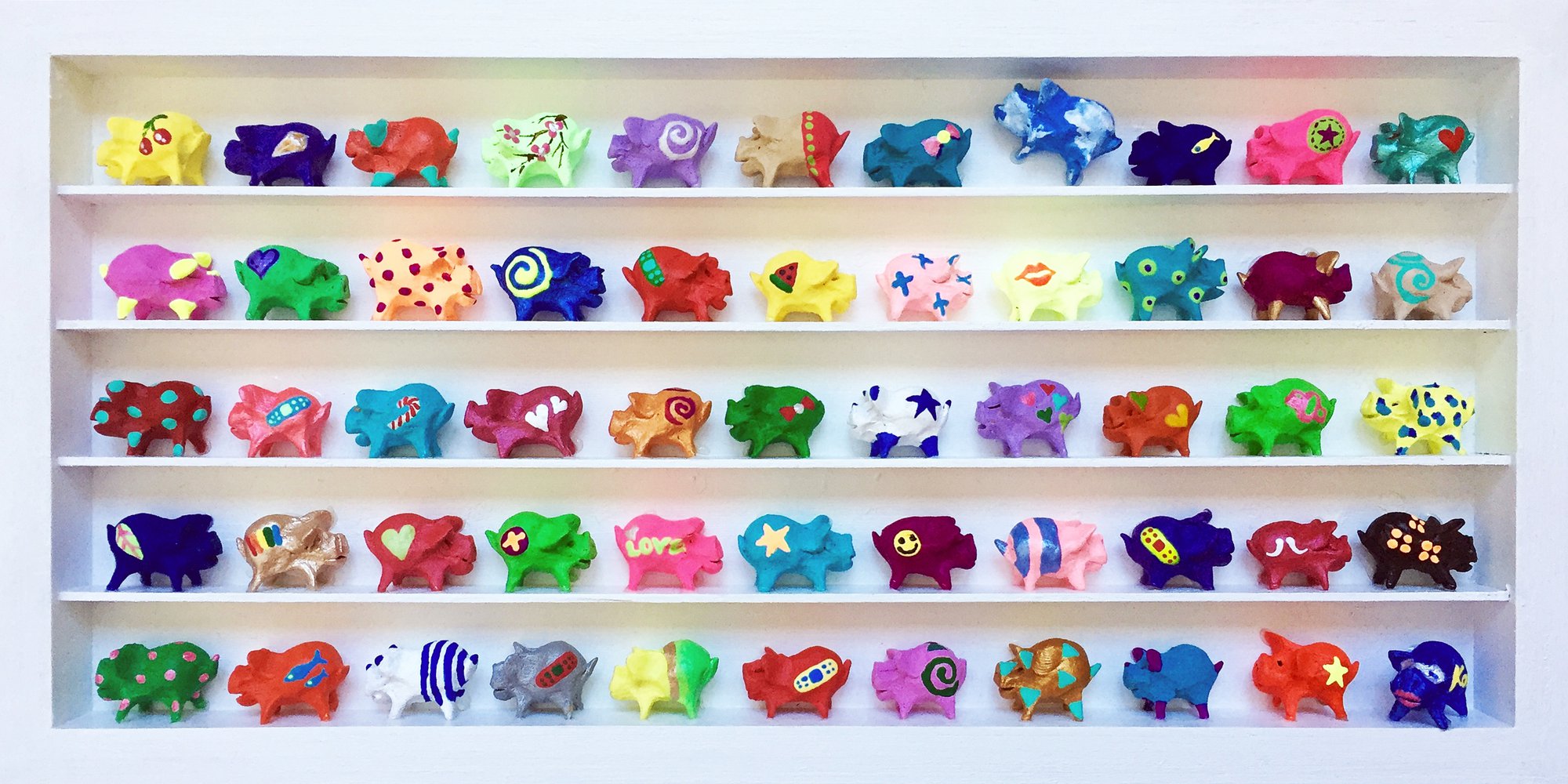Not a piggy bank...Piggy Nation, #7 by Seunghwui Koo
Art as an investment isn't something that we usually put front and centre here at Artfinder. That's first and foremost because we love art, and because we want to sell art that is amazing, rather than something which is primarily judged on it's ability to increase in value. We also want to sell art that is on some level affordable for everyone.
But recently we've been thinking about this word 'investment' a lot, partly because our buyers ask us about it, but also because it comes with the territory. You say 'art' and 99 times out of 100 someone in the room will say 'investment.'
I have personally always been of the opinion that the value of art comes from the satisfaction and excitement it brings into the home of the buyer. At Artfinder we see every day how art can elevate a generic living space into a warm, inviting environment.
But perhaps we should not forget that art also has a lasting value. Original art is not a poster, it’s not a cheap reproduction, it’s a unique work, something that the buyer most likely will live with for years, and might even pass on to next generation. The art will be there, as a loyal participant, that over time will help bring back precious memories and stories.
So I believe there is so much more than monetary value to appreciate in art, so many things that frankly are more important. But it’s an undeniable fact that when an artists is popular, their art will become more expensive over time.
Even if we don’t buy art as an investment, we need to be aware that up and coming artists that are affordable today might not be affordable tomorrow. We might never plan to sell an artwork that we buy, but it might still be true that if we wanted to buy it a few years after we purchased it, we might no longer afford it.
In the traditional art market prices are largely controlled by gate keepers such as gallery owners, and no one really knows if price increases are based on popularity or some arbitrary five-year plan by the gallery (that might leave collectors wondering what happened to the artists, and the artists without a gallery and buyers at the end).
In contrast, in a transparent and efficient marketplace like Artfinder, prices tend to reflect demand, and can be verified by anyone, so price manipulation is considerably less likely. This makes it very interesting to look at Artfinder's best selling artists (for which we have the most data, and hence the most confidence in price levels) and see how their prices have evolved over time. Are there some up-and-coming artists with high demand and rapidly increasing prices? When we look at the top 20 best selling artists in 2014/2015, it turns out that 70% increased their prices from 2014 to 2015, and half of them increased prices over 25%.
Here are some examples of best selling artists with rapidly increasing prices last year, that at the same time maintained their sales velocity, a good sign that demand outstripped supply:
1. Marc Todd: Year on year price increase of 81%
2. Marta Zawadzka: Year on year price increase of 81%
3. Paul Bennett: Year on year price increase of 55%
4. Fintan Whelan: Year on year price increase of 33%
5. Emma Cownie: Year on year price increase of 31%
These numbers are very encouraging, and it's great to see such positive movement for individual artists, and site wide too. Of course we want you to buy original art because you love it, loving it is the main thing - but the thought that your artwork might also increase in value can't hurt, can it?
What do you think? Tell us on Facebook, Twitter or Instagram.


